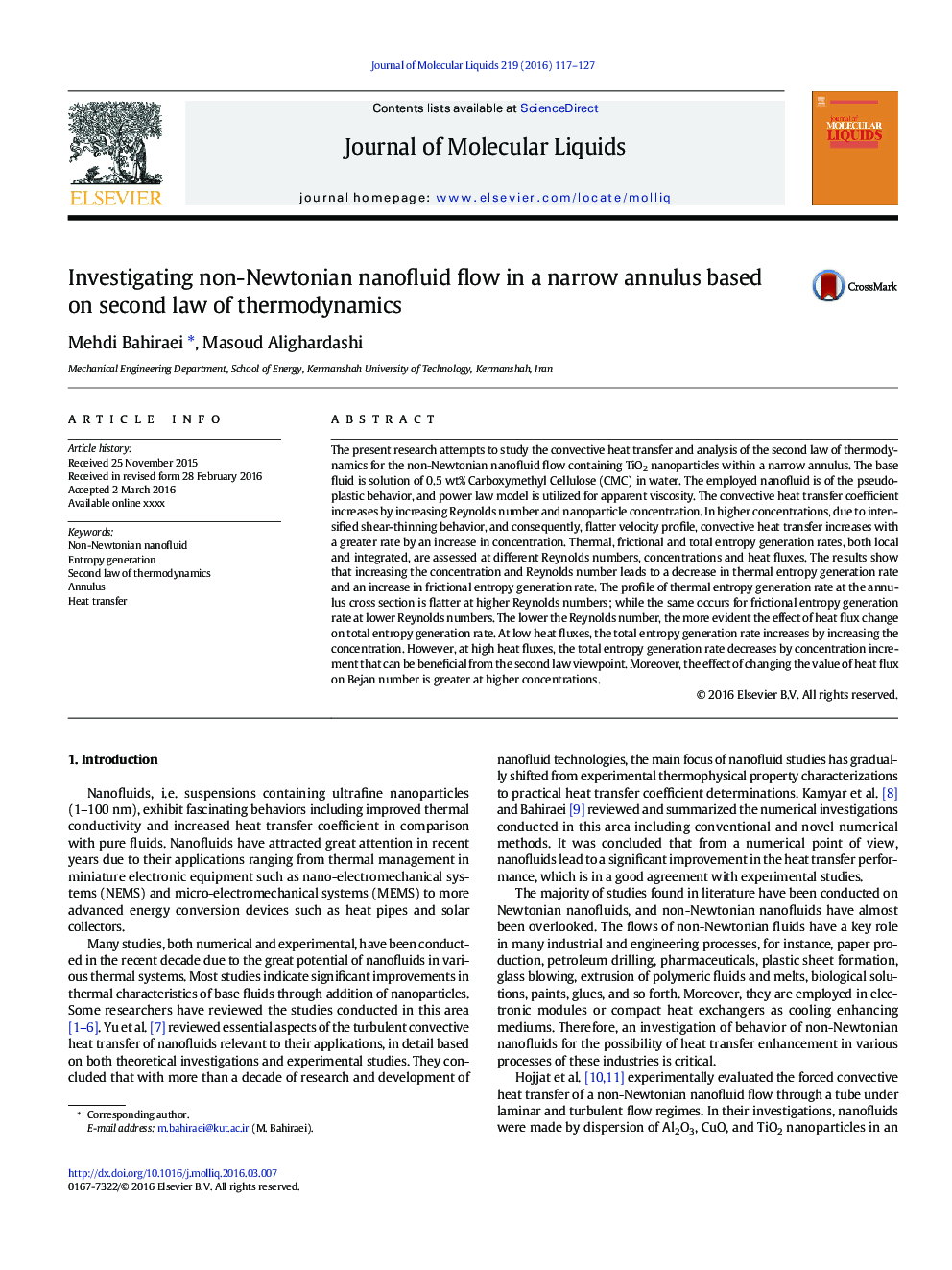| کد مقاله | کد نشریه | سال انتشار | مقاله انگلیسی | نسخه تمام متن |
|---|---|---|---|---|
| 5410101 | 1506551 | 2016 | 11 صفحه PDF | دانلود رایگان |
عنوان انگلیسی مقاله ISI
Investigating non-Newtonian nanofluid flow in a narrow annulus based on second law of thermodynamics
ترجمه فارسی عنوان
بررسی جریان نانوسیم غیر نیوتنی در یک حلقه باریک بر اساس قانون دوم ترمودینامیک
دانلود مقاله + سفارش ترجمه
دانلود مقاله ISI انگلیسی
رایگان برای ایرانیان
کلمات کلیدی
نانوسیمهای غیر نیوتنی، نسل آنتروپی، قانون دوم ترمودینامیک، حلقه انتقال گرما،
موضوعات مرتبط
مهندسی و علوم پایه
شیمی
شیمی تئوریک و عملی
چکیده انگلیسی
The present research attempts to study the convective heat transfer and analysis of the second law of thermodynamics for the non-Newtonian nanofluid flow containing TiO2 nanoparticles within a narrow annulus. The base fluid is solution of 0.5Â wt% Carboxymethyl Cellulose (CMC) in water. The employed nanofluid is of the pseudo-plastic behavior, and power law model is utilized for apparent viscosity. The convective heat transfer coefficient increases by increasing Reynolds number and nanoparticle concentration. In higher concentrations, due to intensified shear-thinning behavior, and consequently, flatter velocity profile, convective heat transfer increases with a greater rate by an increase in concentration. Thermal, frictional and total entropy generation rates, both local and integrated, are assessed at different Reynolds numbers, concentrations and heat fluxes. The results show that increasing the concentration and Reynolds number leads to a decrease in thermal entropy generation rate and an increase in frictional entropy generation rate. The profile of thermal entropy generation rate at the annulus cross section is flatter at higher Reynolds numbers; while the same occurs for frictional entropy generation rate at lower Reynolds numbers. The lower the Reynolds number, the more evident the effect of heat flux change on total entropy generation rate. At low heat fluxes, the total entropy generation rate increases by increasing the concentration. However, at high heat fluxes, the total entropy generation rate decreases by concentration increment that can be beneficial from the second law viewpoint. Moreover, the effect of changing the value of heat flux on Bejan number is greater at higher concentrations.
ناشر
Database: Elsevier - ScienceDirect (ساینس دایرکت)
Journal: Journal of Molecular Liquids - Volume 219, July 2016, Pages 117-127
Journal: Journal of Molecular Liquids - Volume 219, July 2016, Pages 117-127
نویسندگان
Mehdi Bahiraei, Masoud Alighardashi,
